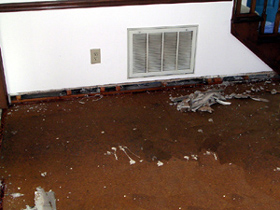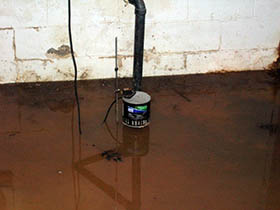Pest Problems After Storms – Moisture & Pests
go.ncsu.edu/readext?429313
en Español / em Português
El inglés es el idioma de control de esta página. En la medida en que haya algún conflicto entre la traducción al inglés y la traducción, el inglés prevalece.
Al hacer clic en el enlace de traducción se activa un servicio de traducción gratuito para convertir la página al español. Al igual que con cualquier traducción por Internet, la conversión no es sensible al contexto y puede que no traduzca el texto en su significado original. NC State Extension no garantiza la exactitud del texto traducido. Por favor, tenga en cuenta que algunas aplicaciones y/o servicios pueden no funcionar como se espera cuando se traducen.
Português
Inglês é o idioma de controle desta página. Na medida que haja algum conflito entre o texto original em Inglês e a tradução, o Inglês prevalece.
Ao clicar no link de tradução, um serviço gratuito de tradução será ativado para converter a página para o Português. Como em qualquer tradução pela internet, a conversão não é sensivel ao contexto e pode não ocorrer a tradução para o significado orginal. O serviço de Extensão da Carolina do Norte (NC State Extension) não garante a exatidão do texto traduzido. Por favor, observe que algumas funções ou serviços podem não funcionar como esperado após a tradução.
English
English is the controlling language of this page. To the extent there is any conflict between the English text and the translation, English controls.
Clicking on the translation link activates a free translation service to convert the page to Spanish. As with any Internet translation, the conversion is not context-sensitive and may not translate the text to its original meaning. NC State Extension does not guarantee the accuracy of the translated text. Please note that some applications and/or services may not function as expected when translated.
Collapse ▲
Water-logged wood flooring and framing should be completely dry before covering.
Flooding and moisture problems in the walls, crawlspaces/basements or attics need to be corrected in a timely manner so they do not lead to other serious pest problems, such as wood-decaying fungi or later with wood-boring beetles in framing wood. Mold/mildew growing on wood or insulation can also attract nuisance pests, such as plaster beetles, which can slowly build up in numbers and become a chronic problem.
Keep a few important facts in mind:
- Mold/ mildew on surfaces can pose some health issues and needs to be addressed as quickly as possible. For more information about mold indoors, visit the EPA website.
- Mold/mildew growing on joists or beams does not mean that wood is decaying (or will decay).
- Wood-decaying fungi do not grow below the fiber-saturation point (28-30% moisture) of the wood.
- Problems with woodboring beetles are less likely to occur when the wood’s moisture content is below 14%. This level may be difficult to reach immediately. Do not close-up walls until the wood moisture content is as least down to 19%. (preferably closer to 15%).
- You need a moisture meter to determine if you have excess moisture in your crawlspace, attic or framing walls.
At this point, applying pesticides to correct apparent wood decay is NOT the best solution to the problem. Your priority should be to complete temporary or permanent repairs. If the opportunity is there to apply a borate product to exposed framing before sheetrock is installed, then it may help protect the wood from wood-destroying insects and wood-decaying fungi (except in the event of flooding which would remove the chemical). The next objective is to allow the wood to dry out as quickly as possible.
It may take some time to get the wood moisture down in a flooded/wet crawlspace or basement, but it is not impossible. Here are a few hints:
- Make sure crawlspace foundation vents open properly and are clear of debris.
- If possible, eliminate standing water from the crawlspace or basement ASAP. Increase ventilation to the crawlspace. This can be a simple matter of opening the crawlspace door or using a fan to pull air OUT of the crawlspace, assuming that weather conditions (and availability of electricity) allow you to do so. You may have to use some large-mesh metal screening over the crawlspace door to keep out animals, such as raccoons, opossums and skunks.
- Remove and replace place wet insulation in crawlspaces and walls.



